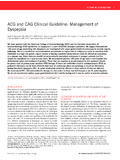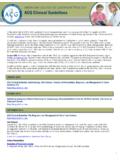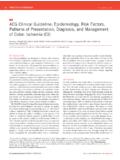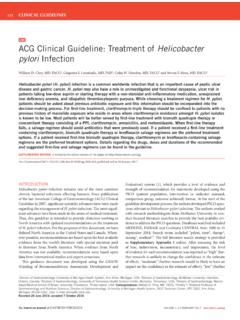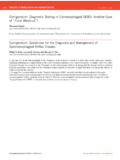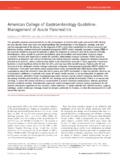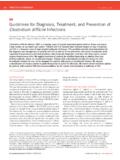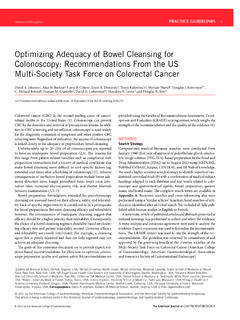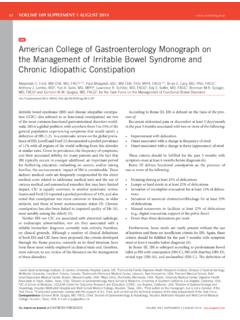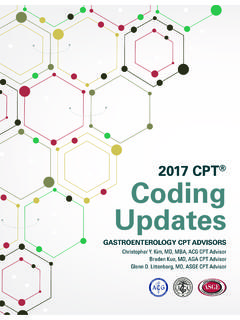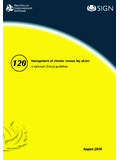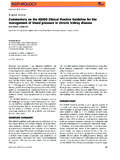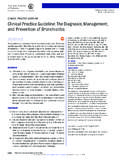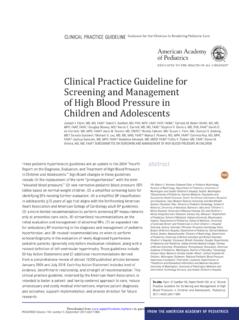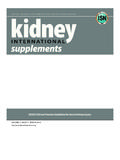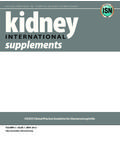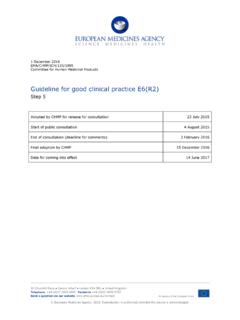Transcription of ACG Clinical Guideline: The Diagnosis and Management of ...
1 Nature publishing group PRACTICE guidelines 1. ACG Clinical Guideline: The Diagnosis and Management of Idiosyncratic Drug-Induced Liver Injury Naga P. Chalasani, MD, FACG1, Paul H. Hayashi, MD2, Herbert L. Bonkovsky, MD, FACG3, Victor J. Navarro, MD4, William M. Lee, MD, FACG5. and Robert J. Fontana, MD6, on behalf of the Practice Parameters Committee of the American College of Gastroenterology Idiosyncratic drug-induced liver injury (DILI) is a rare adverse drug reaction and it can lead to jaundice, liver failure, or even death. Antimicrobials and herbal and dietary supplements are among the most common therapeutic classes to cause DILI in the Western world. DILI is a Diagnosis of exclusion and thus careful history taking and thorough work-up for competing etiologies are essential for its timely Diagnosis . In this ACG Clinical Guideline, the authors present an evidence-based approach to Diagnosis and Management of DILI with special emphasis on DILI due to herbal and dietary supplements and DILI occurring in individuals with underlying liver disease.
2 Am J Gastroenterol advance online publication, 17 June 2014; PREAMBLE lowing levels: high, moderate, low, or very low quality (1). This The writing group was invited by the Board of the Trustees and is a practice guideline for clinicians rather than a review article, the Practice Parameters Committee of the American College and we refer interested readers to several comprehensive reviews of Gastroenterology to develop a practice guideline regarding published recently (2 6). the Diagnosis and Management of idiosyncratic drug-induced liver injury (DILI). The writing group developed this practice guideline using an evidence-based approach. We used the fol- INTRODUCTION. lowing resources: (i) a formal review and analysis of the recently Drug-induced liver injury (DILI) remains one of the most chal- published world literature on the topic (Medline search up to lenging disorders faced by gastroenterologists. The wide range of May 2013); (ii) the American College of Physicians' Manual for presentations and culprit agents and lack of objective diagnostic Assessing Health Practices and Designing Practice guidelines ; tests make its Diagnosis and Management particularly difficult.
3 (iii) guideline policies of the American College of Gastroenter- Despite its low incidence in the general population, gastroenter- ology; and (iv) the experience of the authors and independent ologists must always consider the possibility of DILI in patients reviewers with regard to idiosyncratic DILI. with unexplained acute and chronic liver injury, as well as when These recommendations, intended for use by physicians and prescribing certain gastrointestinal medications ( , azathio- other health-care providers, suggest preferred approaches to prine, anti-tumor necrosis factor agents, sulfonamides) (7,8). the Diagnosis and Management of DILI. They are intended to Many herbal and dietary supplements (HDS) can cause DILI, be flexible and should be adjusted as deemed appropriate when and thus they must be considered as a cause for DILI. For the applied to individual patients. Recommendations are evidence- purposes of this guideline, the term DILI will refer to idiosyn- based wherever possible, and, when such evidence is not avail- cratic liver injury from HDS, as well as prescription drugs or able, recommendations are made based on the consensus opinion over-the-counter drugs.
4 Of the authors. To more fully characterize the available evidence One common and useful characterization of DILI is to separate supporting the recommendations, the ACG Practice Parameters them into intrinsic or idiosyncratic types. The former refers to Committee has adopted the classification used by the Grading drugs that are capable of causing liver injury predictably in humans of Recommendation Assessment, Development, and Evaluation or in animal models when given in sufficiently high doses. Aceta- (GRADE) workgroup with minor modifications (Table 1). The minophen (APAP) is perhaps the best-known and widely used strength of recommendations in the GRADE system is classi- drug to cause intrinsic DILI. Idiosyncratic DILI is less common, fied as strong or conditional. The quality of evidence supporting affects only susceptible individuals, has less consistent relationship strong or weak recommendations is designated by one of the fol- to dose, and is more varied in its presentation.
5 Although recent 1. Indiana University School of Medicine, Indianapolis, Indiana, USA; 2 University of North Carolina, Chapel Hill, North Carolina, USA; 3 CarolinasHealthCare System, Charlotte, North Carolina, USA; 4 Einstein Health Care Network, Philadelphia, Pennsylvania, USA; 5 University of Texas at Southwestern Medical Center, Dallas, Texas, USA; 6 University of Michigan, Ann Arbor, Michigan, USA. Correspondence: Naga P. Chalasani, MD, FACG, Indiana University School of Medicine, Indianapolis, Indiana 46202, USA. E-mail: Received 21 October 2013; accepted 10 April 2014. 2014 by the American College of Gastroenterology The American Journal of GASTROENTEROLOGY. 2 Chalasani et al. there is an increasing risk of liver injury because of many medica- Table 1. Grading of Recommendations, Assessment, Development tions such as isoniazid, amoxicillin clavulanate, and nitrofuran- and Evaluation (GRADE) (1). toin (15). Strength of recommendation Criteria There is no evidence to suggest that women are at a higher risk Strong Factors influencing the strength of the for all-cause DILI ( , DILI caused by any type of agent), but recommendation included the quality of they appear to be at a higher risk of liver injury caused by certain the evidence, presumed patient-impor- medications such as minocycline, methyldopa, diclofenac, nitro- tant outcomes, and cost furantoin, and nevirapine.
6 The typical signature of DILI caused by Conditional Variability in preferences and values, or minocycline, methyldopa, diclofenac, and nitrofurantoin is chronic more uncertainty. Recommendation is made with less certainty, higher cost or hepatitis resembling autoimmune hepatitis with female prepon- resource consumption derance. Hepatotoxicity due to nevirapine is also more common in Quality of evidence Criteria women, especially those with higher CD4 + cell count (5). DILI is a rare cause of acute liver injury in pregnant women, High Further research is unlikely to change confidence in the estimate of the Clinical which could well be due to generally infrequent use of prescription effect medications. There is no evidence to suggest that pregnancy by Moderate Further research may change confidence itself increases the susceptibility to DILI to any agents other than in the estimate of the Clinical effect tetracycline. High-dose intravenous tetracycline has been classi- Low Further research is very likely to impact cally described to cause DILI in pregnant women, but intravenous confidence on the estimate of Clinical tetracycline is seldom used now in the developed world (2,4,5).
7 Effect Common causes of DILI in pregnant women are antihypertensive Very low The estimate of the effect is very uncer- agents such as methyldopa and hydralazine, antimicrobials includ- tain ing antiretroviral agents, and propylthiouracil. Although animal experiments show that diabetes mellitus increases susceptibility to toxic liver injury caused by certain com- data have begun to blur the distinction between these two catego- pounds ( , APAP), there is no evidence to show that diabetes ries somewhat, they remain useful conceptual paradigms. APAP, mellitus increases the risk of all-cause DILI in humans. Liver injury although by far the most common cause of DILI, is the only agent due to selected compounds such as methotrexate and anti-tuber- in wide use that causes intrinsic DILI. Its Clinical picture is rela- culosis medicines may be increased in individuals with diabetes. tively easy to recognize. Diagnostic and therapeutic guidelines for A preliminary report from the United States Drug-Induced Liver APAP hepatotoxicity are well established (9 11).
8 Therefore, this Injury Network (DILIN) showed that underlying diabetes melli- guideline is limited to the wider array of idiosyncratic DILI that tus was independently associated with the severity of DILI (odds is more difficult to diagnose and treat. In addition, characterizing ratio = ; 95% CI = ) (16). the injury by latency, pattern of injury ( , R-value), mortality Although alcohol consumption is included as one of the ele- risk (Hy's Law) (5,12), and outcome (resolution versus chronic) is ments for assessing causality in the Roussel Uclaf Causality critical in evaluating and managing DILI in Clinical practice. These Assessment Method (RUCAM) causality instrument (17,18), topics and terms form the framework for this guideline and are there is no evidence to suggest that chronic alcohol consump- defined in Table 2. tion is a risk factor for all-cause DILI. However, heavy alcohol consumption is a risk factor for causing DILI owing to certain Genetic and nongenetic risk factors compounds such as APAP, methotrexate, and isoniazid.
9 The Our understanding of genetic risk factors for DILI is still in package insert recommends that individuals with substantial its infancy; describing the known genetic associations with alcohol consumption should not take duloxetine, although there diverse drugs is beyond the scope of this Clinical practice guide- are no published data to show that alcoholism increases the risk line (2). Nongenetic risk factors can be host-related environ- of duloxetine hepatotoxicity. mental factors, or they can be compound-specific in nature Drug drug interactions and polypharmacy are often invoked as (Table 3). risk factors for DILI, although there is scant evidence to show that The causative agents for DILI in children and in adults vary, and they increase the risk of all-cause DILI. However, drug interactions they differ based on the indication for which the medications are may potentially exacerbate the risk of DILI due to antituberculosis prescribed. Age may confer susceptibility to DILI in a drug-spe- agents and anticonvulsants such as valproate.
10 Cific manner. For example, drugs that act on the central nervous system and antimicrobials are the more common causes of DILI Summary statements in children. Infants and children appear susceptible to liver injury caused by valproate and are at an increased risk of Reye's syndrome Although a number of host, environmental, and compound- caused by aspirin. Although propylthiouracil may cause DILI in all specific risk factors have been described in the literature, there age groups, children are more susceptible to severe and fatal hepa- is no evidence to suggest that these variables represent major totoxicity due to propylthiouracil (13,14). With increasing age, risk factors for all-cause DILI. The American Journal of GASTROENTEROLOGY VOLUME 104 | XXX 2014 Diagnosis and Management of DILI 3. Table 2. Terminology and definitions Table 3. Variables that may predispose individuals to idiosyncratic DILI. Term or concept Definition Host factors Environmental factors Drug-related factors Intrinsic DILI Hepatotoxicity with potential to affect all individuals to varying degrees.
